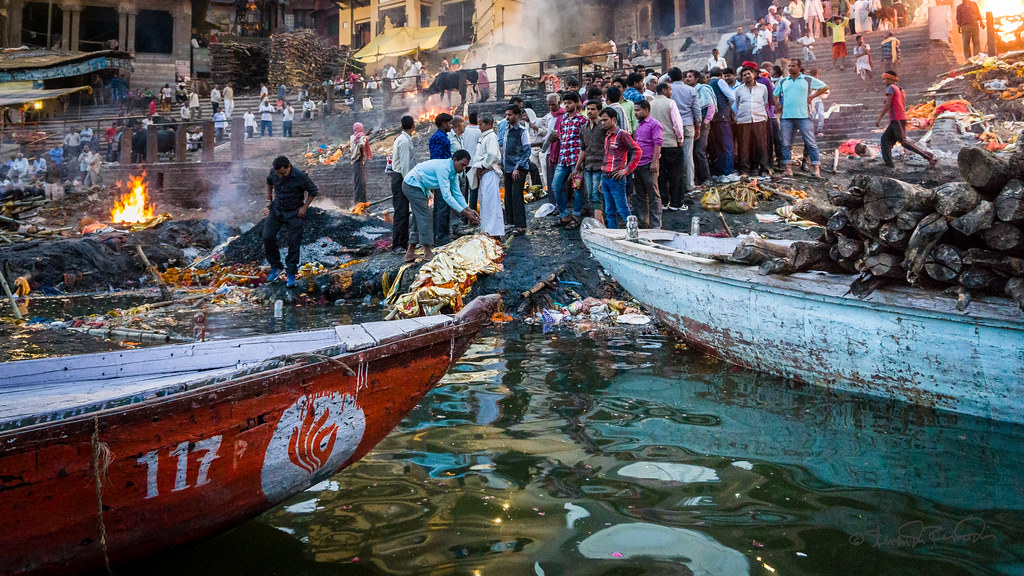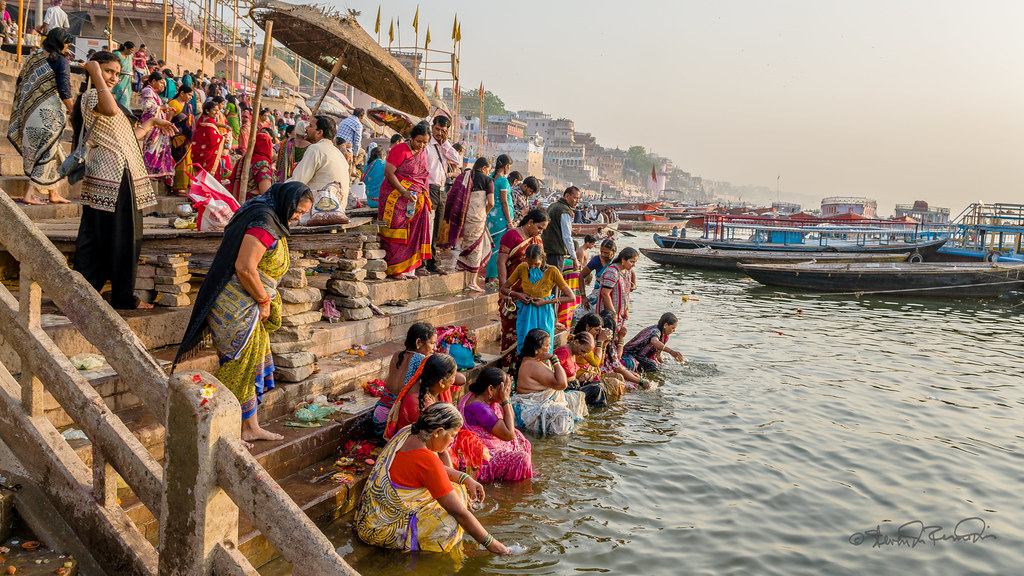
The Ganges River is the sacred river for Hindus. Its waters are considered pure and purifying; it absorbs impurities and flushes them away. It is also the vehicle to heaven as the crossing point for all beings from earth to heaven. Those who die on the banks of the Ganges and are cremated at Varanasi achieve salvation.

Along the Ganges' western shores at Varanasi there are areas called ghats that serve as access points to the river. Many use the ghats to bathe in the holy river water, others offer rituals of worship, and others hold cremation rites.
Cremation on the Ganges River: A Sacred Ritual
The Ganges River, considered holy in Hinduism, is a central figure in the Hindu concept of death and afterlife. The process of cremation on its banks is a deeply significant ritual. Hindus believe that immersing the ashes of the deceased in the Ganges liberates the soul from the cycle of reincarnation (samsara) and helps it attain moksha, or liberation. The river is seen as purifying, and the act of cremation on its banks is considered a sacred way to release the soul from earthly bonds.
The Cremation Process: Cremation typically takes place on the ghats, the steps leading down to the river. The body is prepared and wrapped in cloth before being placed on a wooden pyre. The eldest son, traditionally, lights the funeral pyre.
Wood: Traditionally, sandalwood or other sacred woods are used for the pyre, though economic realities often dictate the type of wood used.
Process: The body is completely consumed by fire. The remaining ashes are then gathered and immersed in the Ganges.
Rituals: The process is often accompanied by prayers and chanting of sacred hymns. Family members and mourners participate in the rituals.
While cremation on the Ganges is a deeply spiritual practice, it has also faced criticism due to environmental and public health concerns. The increasing number of cremations has led to pollution of the river, and there have been instances of overcrowding and mismanagement of the cremation sites.
The eldest son, or a male mourner, or a priest, called the lead cremator or lead mourner, then bathes himself and his hair is cut leaving only one strand before leading the cremation ceremony. He circumambulates the dry wood pyre with the body, says a eulogy, places sesame seeds or rice on the deceased's chest, hand and legs. He sprinkles the body and the pyre with ghee, then draws three lines signifying Yama (deity of the dead), Kala (time, deity of cremation) and the dead.
Prior to lighting the pyre, an earthen pot is filled with water, and the lead mourner circles the body with it, before lobbing the pot over his shoulder so it breaks near the head. Once the pyre is ablaze, the lead mourner and the closest relatives may circumambulate the burning pyre one or more times.
The ceremony is concluded by the ritual piercing of the burning skull with a stave in order to release the spirit. The cold collected ash from the cremation is later consecrated to the nearest river or sea.
- Wikipedia

